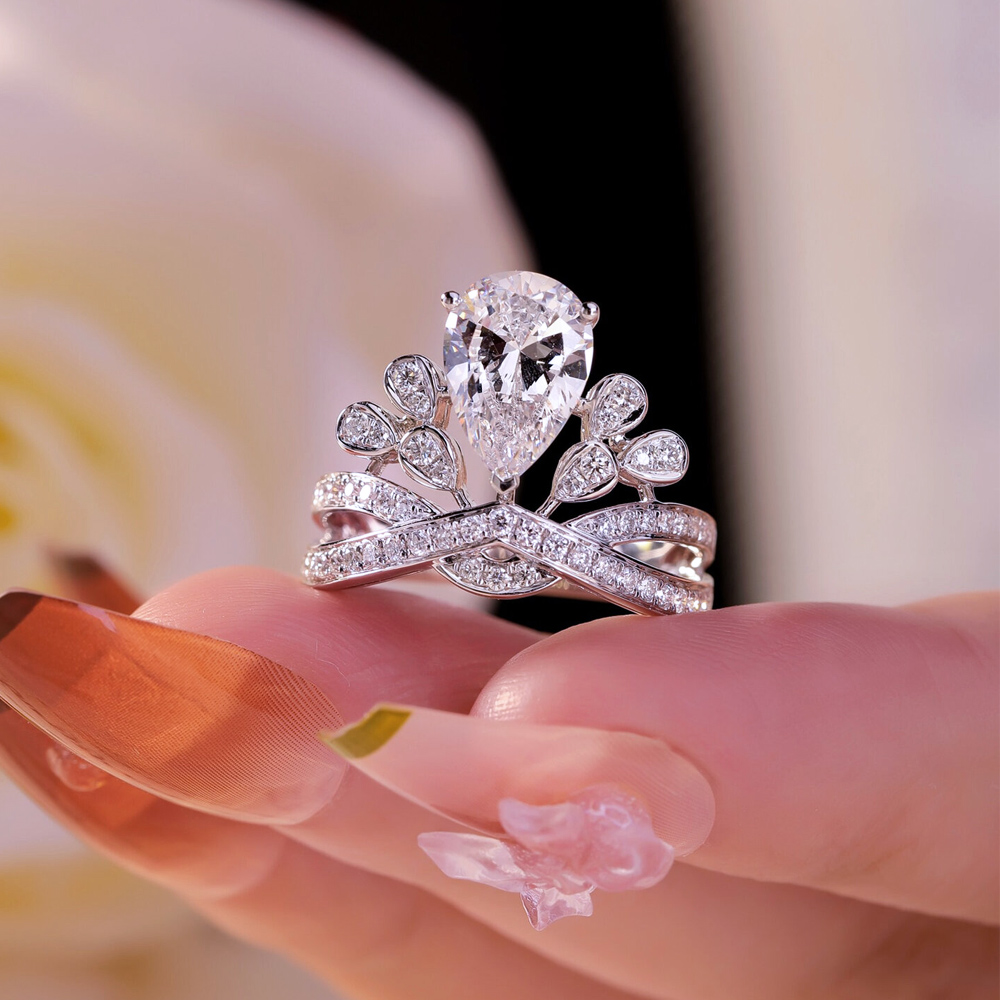When it comes to lab grown diamond rings, the term “claws” refers to the prongs or settings that hold the diamond securely in place. Claws for lab grown diamond rings play a crucial role in both the aesthetics and functionality of the ring. This article explores the significance of claws in lab grown diamond rings and offers insights into their various types and benefits.
Understanding Claws for Lab Grown Diamond Rings
Claws for lab grown diamond rings are designed to grip the diamond firmly, ensuring it stays in place while allowing maximum light to pass through and enhance the stone’s brilliance. These claws, or prongs, are typically made from the same material as the ring band, such as platinum, gold, or white gold. Their primary function is to secure the lab grown diamond while highlighting its beauty.
Types of Claws for Lab Grown Diamond Rings
Several types of claws can be used in lab grown diamond rings, each offering different benefits and styles. The most common types include:
- Four-Prong Setting: This classic setting uses four claws to hold the diamond. It provides a secure grip and allows for a great amount of light to enter the diamond, enhancing its sparkle.
- Six-Prong Setting: With six claws, this setting offers extra security and is often used for round diamonds. It provides a more rounded appearance and is popular for its durability.
- Bezel Setting: Instead of claws, this setting uses a metal band around the diamond to hold it in place. Bezel settings offer excellent protection for the stone and a sleek, modern look.
- Half-Bezel Setting: A combination of claws and bezel, this setting provides partial protection while showcasing the diamond’s edges.
The Benefits of Choosing Claws for Lab Grown Diamond Rings
Choosing the right claws for lab grown diamond rings can significantly impact both the ring’s appearance and durability. The benefits of claws include:
- Enhanced Brilliance: Claws hold the diamond in a way that maximizes its exposure to light, enhancing its brilliance and sparkle.
- Security: Properly designed claws ensure that the diamond is held securely, reducing the risk of it becoming loose or falling out.
- Versatility: Claws can be styled in various ways to suit different design preferences, from classic to contemporary.
- Customization: The choice of claws allows for personalization, enabling you to create a unique lab grown diamond ring that reflects your style.
Maintenance and Care for Claws in Lab Grown Diamond Rings
Maintaining claws for lab grown diamond rings is essential to ensure the longevity and security of the diamond. Regular check-ups are recommended to ensure that the claws remain tight and secure. Additionally, cleaning the claws and the diamond regularly can prevent dirt and grime from affecting the ring’s appearance. If you notice any issues with the claws, such as bending or loosening, it’s advisable to seek professional assistance to avoid potential damage to the diamond.
Claws vs. Other Settings for Lab Grown Diamond Rings
While claws are a popular choice for lab grown diamond rings, other settings offer different benefits. For instance, bezel settings provide excellent protection for the diamond but may reduce the amount of light entering the stone. On the other hand, prong settings, including claws, enhance the diamond’s sparkle by allowing more light to pass through. The choice between claws and other settings depends on personal preference, lifestyle, and desired aesthetic.
The Aesthetic Impact of Claws for Lab Grown Diamond Rings
The aesthetic impact of claws in lab grown diamond rings is significant. Claws can be designed to complement the diamond’s shape and enhance its overall appearance. For example, delicate claws can create a vintage look, while bold, modern claws can provide a contemporary feel. The design of the claws should harmonize with the ring’s band and overall design to achieve a cohesive and elegant appearance.
The Future of Claws in Lab Grown Diamond Rings
As lab created diamonds continue to gain popularity, the design and functionality of claws are likely to evolve. Innovations in jewelry design may introduce new types of claws or settings that offer enhanced security, aesthetics, or ease of maintenance. The future of claws in lab grown diamond rings will be influenced by trends in fashion, technology, and consumer preferences, leading to exciting developments in ring design.
Conclusion: Choosing the Right Claws for Your Lab Grown Diamond Ring
Selecting the right claws for lab grown diamond rings is a key aspect of achieving both style and functionality. By understanding the different types of claws and their benefits, you can make an informed decision that enhances the beauty and security of your lab grown diamond ring. Whether you prefer classic prong settings or modern bezel designs, the right claws will ensure that your diamond shines brilliantly and remains securely in place.



